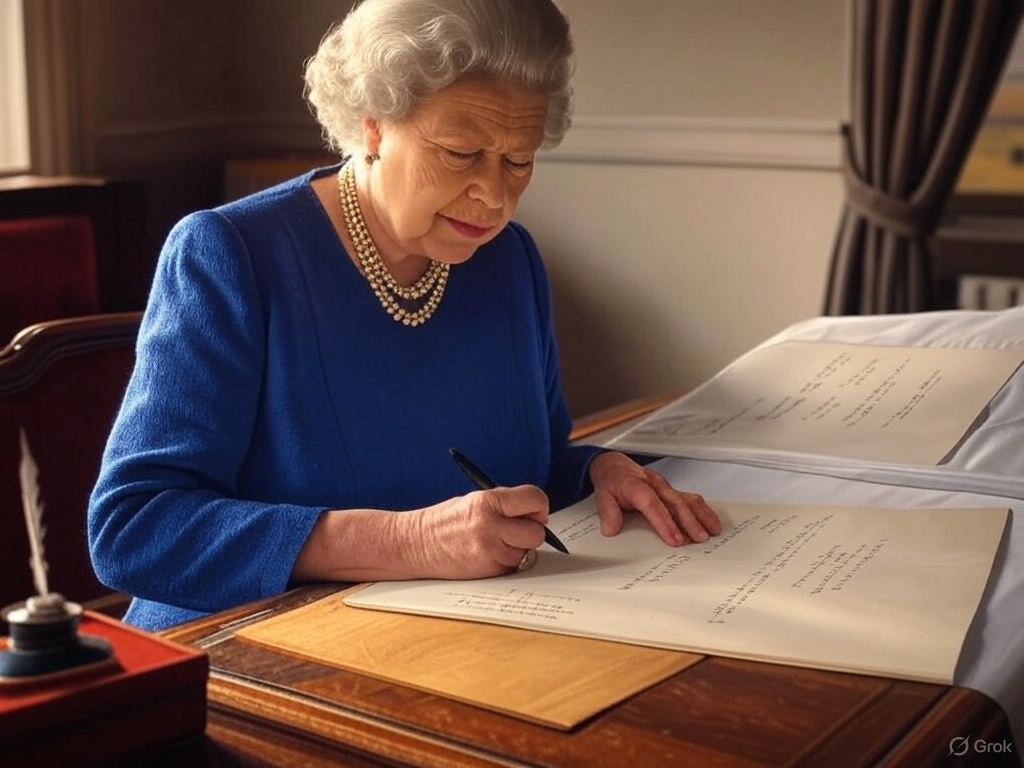ROYAL FAMILY
Breaking: an a heading secret review in a place, Elizabeth Wrote Two Letters On Her Death Bed — One Of Them Was For a Non-Royal Member…Read More 👇

Elizabeth Wrote Two Letters On Her Death Bed — One Of Them Was For a Non-Royal Member
Queen Elizabeth II, Britain’s longest-serving monarch, passed away on September 8, 2022, at the age of 96, leaving behind a legacy defined by grace, resilience, and an unshakable sense of duty.
In her final hours at Balmoral Castle, Elizabeth completed two deeply personal letters, discovered shortly after her death in one of her iconic red boxes.
One was addressed to her son, King Charles III, while the other was written to a non-royal member—her trusted private secretary, Sir Edward Young.
This touching detail, uncovered in royal biographer Robert Hardman’s The Making of a King: King Charles III and the Modern Monarchy, reveals the Queen’s thoughtful preparation for her departure and her enduring commitment to those closest to her, even as her life drew to a close.
The Letters Unearthed
After Elizabeth slipped away peacefully at Balmoral, her staff began the solemn task of managing the transition.
Amid this, a footman delivered her final red box—a daily symbol of her reign, typically filled with state papers and correspondence.
Inside this particular box, however, were two sealed envelopes: one for King Charles III and the other for Sir Edward Young. The contents remain private, known only to their recipients, but their discovery speaks volumes about Elizabeth’s state of mind in her last days.
Hardman writes, “We will probably never know what they said. However, it is clear enough that the Queen had known that the end was imminent and had planned accordingly.” Were these letters farewells, instructions, or a blend of both? Their mystery only deepens their poignancy.
The Recipients: A King and a Loyal Aide
The first letter was for Charles, who ascended to the throne as King Charles III upon his mother’s death.
Having spent his life preparing to succeed her, Charles likely received a message tailored to his new role—perhaps a blend of maternal wisdom and royal guidance.
Given Elizabeth’s lifelong devotion to the monarchy, the letter may have offered support or direction as he stepped into her shoes, though its exact nature remains a matter of speculation.
The second letter, addressed to Sir Edward Young, stands out for its recipient—a non-royal who had served as Elizabeth’s private secretary since 2004.
Young was a key figure in her inner circle, overseeing her official duties and acting as a vital link between the palace and the government.
Writing to him in her final moments highlights the trust and gratitude she felt for his years of service.
It’s a rare glimpse into Elizabeth’s appreciation for those outside the royal family who enabled her reign, making this letter a striking testament to her personal loyalty.
Duty Until the End
Beyond the letters, the red box held one final royal act: Elizabeth’s approval of candidates for the Order of Merit, a distinguished award recognizing exceptional contributions across the Commonwealth.
Sent to her just two days before her death, she reviewed the list, marked her choices, and returned it for Young to process.
Hardman notes, “It was the last document ever handled by Queen Elizabeth II. Even on her deathbed, there had been work to do. And she had done it.”
This meticulous attention to her responsibilities, even in frail health, encapsulates her lifelong ethos of service.
A Peaceful Farewell
Sir Edward Young, in a memo preserved in the Royal Archives, described Elizabeth’s passing: “Very peaceful. In her sleep. Slipped away.
Old age. She wouldn’t have been aware of anything. No pain.” Surrounded by loved ones like Princess Anne and her dresser Angela Kelly, Elizabeth faced her end with quiet dignity.
The red box’s arrival came as Charles raced to Balmoral, only to learn of her death en route—a moment that marked the abrupt start of his reign.
A Personal Legacy
These letters illuminate Elizabeth’s character—her foresight, her care for her son’s future, and her recognition of those who supported her.
The note to Young, in particular, underscores her gratitude toward a non-royal confidant, reflecting the collaborative spirit behind her monarchy.
While she maintained a reserved public persona, these private gestures hint at the warmth she reserved for those closest to her.












